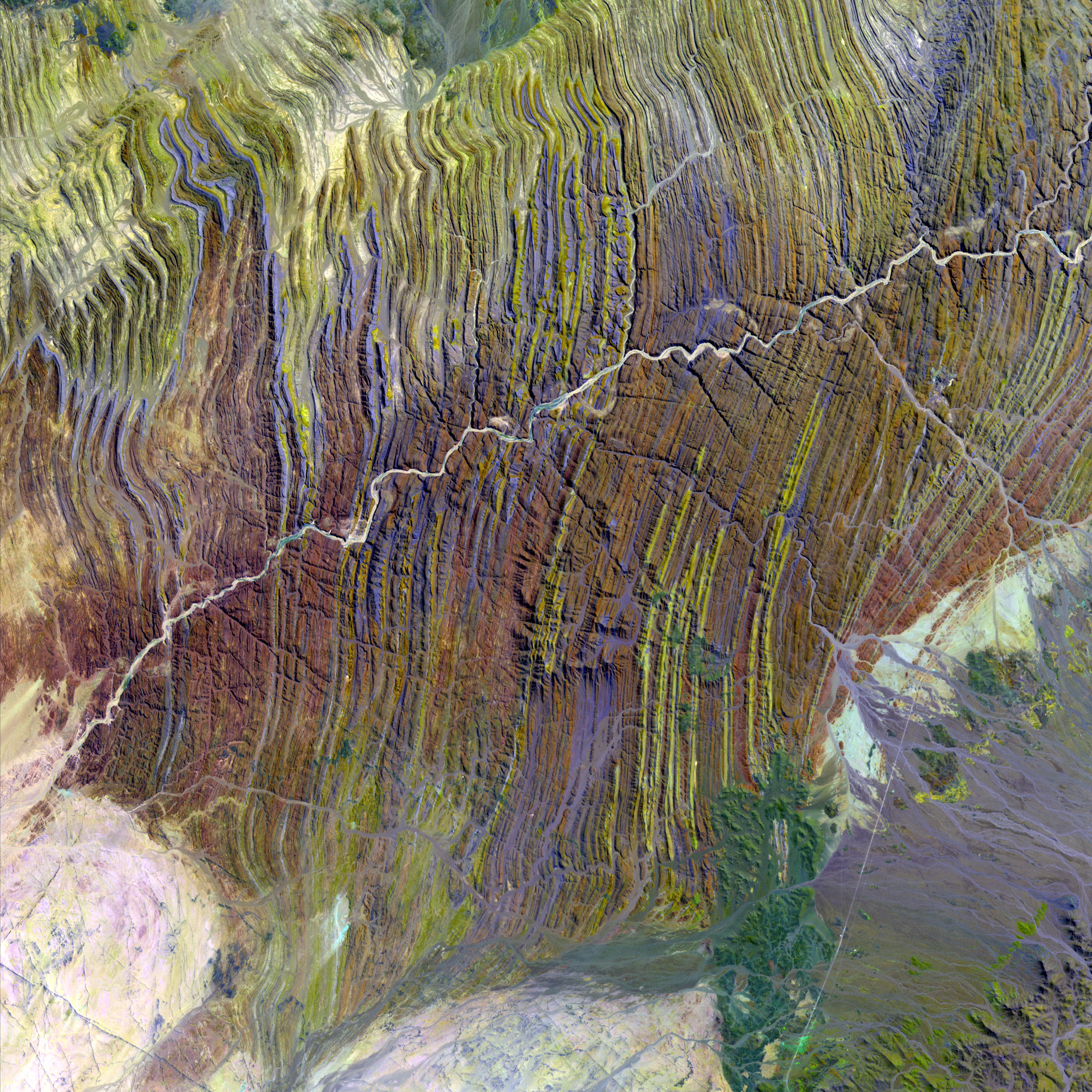An Ephemeral River, Viewed From Space
This ephemeral river may only last a few days a year, but it’s life sustaining.

A colorful depiction of the ephemeral Ugab River in Namibia. It's unclear from this image whether or not there was water in the river when the picture was taken. Image provided by the USGS EROS Data Center Satellite Systems Branch
Go to the Ugab river basin in the African country of Namibia, and you probably won’t find a raging flow. For most of the year, the area is a caked and baked desert, but as this artistically colored satellite image shows, the river’s wavy imprint on the landscape is unmistakable.
The Ugab is an ephemeral river, an episodic phenomenon that occurs in various arid regions around the globe. Unlike permanent systems such as the Amazon or Colorado rivers, which are fed year-round by substantial rainfall or melting alpine snows, ephemeral rivers form from seasonal precipitation. (See another picture of the Ugab here.)
“They’ll show up anywhere where rainfall is below about 20 inches per year,” such as desert areas in Australia, the Southwestern United States, and sub-Saharan Africa, according to Jim Gore, a professor at the University of Tampa who studies river ecology. When these waterways appear and how long they last is unpredictable—one might flow for a few days, only to disappear entirely for years at a time, says Gore.
The Ugab materializes in the Namib Desert, South Africa’s driest region—there are no permanent water sources—located in the northwestern part of the country. Big storms fuel the river by dumping loads of rain on a plateau above the desert, according to Paul Angermeier, a U.S. Geological Survey scientist and a professor at Virginia Tech University, who has visited the area. If there’s sufficient runoff, “it flows above the surface for only a few days or weeks per year” toward the Atlantic coast, he says.
The Ugab’s short-lived waterway is “a critical lifeline for both people and critters,” Angermeier says, especially because the riverbed holds onto water long after it stops flowing over the surface. People living near the Ugab grow vegetable gardens on its wet banks, and the critically endangered black rhinoceros relies on the river for hydration as well as the vegetation it sustains.
The cycle of wet and dry that characterizes ephemeral rivers such as the Ugab creates a unique ecological niche. Various invertebrate species, including shrimp-like crustaceans and insects, have evolved ways to escape the dry periods by developing life stages that can survive in the sand without water, Gore says. Ephemeral rivers are also home to tardigrades, or, water bears, a hardy, microscopic creature that can survive in the most extreme environments on earth and even in the vacuum of space.
Andrew is a New York-based freelance writer. He was Science Friday’s intern during fall 2013.